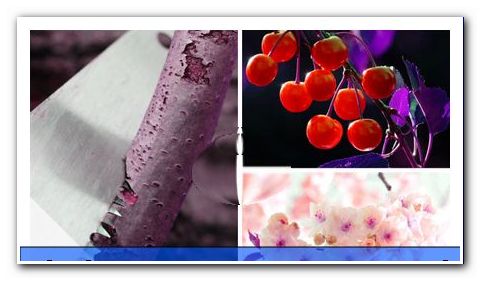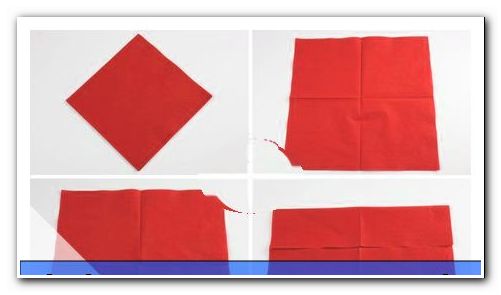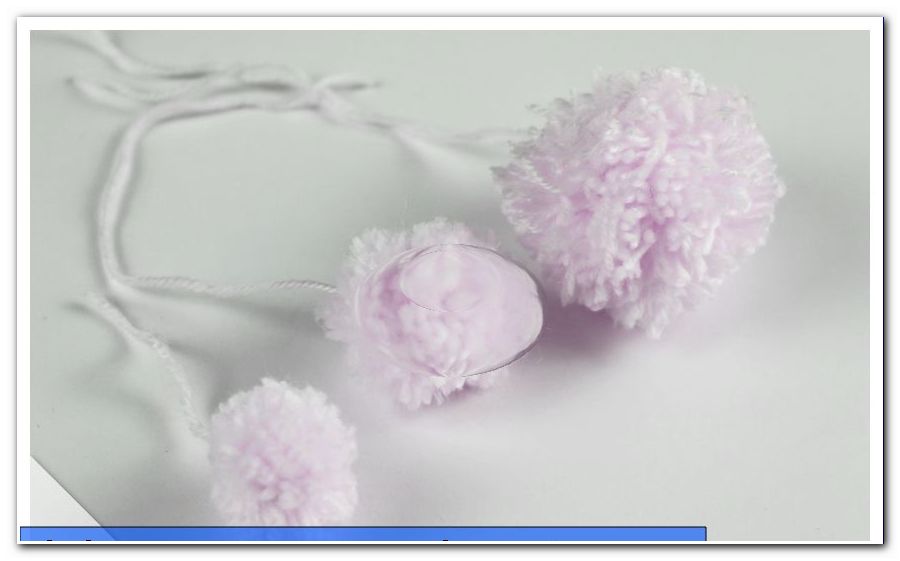Complementary colors - Definition + Combine colors correctly

- Basic colors or primary colors
- Mixed colors or secondary colors
- Determine complementary colors on the color wheel
- Determine colors quickly and easily
- Effect of colors
- Insert complementary colors correctly
Whether it's painting and crafting, editing your favorite photos or, in general, all sorts of design - whether it's make-up, special outfit ideas or site creation: complementary colors help decide how good the result looks like! The great thing about it: This immense effect can be easily understood and then used for your own creative purposes.
Recognize the power of colors and use them purposefully
Colors make the first impression of things. This is because the human brain can process color information faster than surface forms or their structures. In the case of a red ball, the observer would first perceive its red before the round shape or even the smooth material play a role.
This clearly shows that colors have an incredibly strong effect. In addition to their primacy, they can also bring sensual messages, such as a warm or cool aura, good-humored brightness or mysterious darkness. In addition, they can be found to be very appropriate - or bite. This is where the complementary colors come into play. For the power of colors is by no means an accidental phenomenon. Rather, the entire colorful world - as almost always - is based on pure physics. Do not worry, you do not have to struggle to get the full effect of complementary colors soon. For a better understanding, you need no more than the color wheel shown below and a few minutes reading time. If you also have an old color box or similar software in your hand, you can try out the exciting "magic" of the colors yourself.
Basic colors or primary colors
There are three basic colors, also called primary colors. These can not be broken down into other tones and therefore not produced by mixing. You could compare them to the prime numbers in mathematics, which are known to be divisible only by themselves. The three primary colors include:
- YELLOW
- RED
- BLUE

These three tones are dominant colors with the strongest possible expression. This occurs especially when at least two of them occur side by side. Such a combination of primary red, primary yellow and primary blue, for example, is often used for clown costumes thanks to its very vital and cheerful effect in order to create a sympathetic impression on children. The intense power of expressionist paintings is not least due to the popular juxtaposition of two primary colors.
While the primary colors are immiscible, in return they allow the production of many new nuances, the so-called secondary colors. All the innumerable nuances known to the eye can basically be mixed together from this three-tone base.
Mixed colors or secondary colors
Mixed colors or, conse- quently, secondary colors are always mentioned when the combination of two primary colors - and equal proportions - results in a third tone. This means that two primary colors are mixed 50:50, creating a new, secondary color. These are again three:
- VIOLET = RED + BLUE
- GREEN = YELLOW + BLUE
- ORANGE = YELLOW + RED

In summary, we now have three primary colors and three secondary colors available. These can be clearly arranged in a circle consisting of six equal parts. There should always be one field left between the primary colors. In this exactly the secondary color is drawn, which arises from its two neighbors.

Determine complementary colors on the color wheel
As soon as you have memorized the primary colors, this simple color circle makes it clear which mixed colors arise from their respective combination. But the circle also shows something else, namely the complementary colors. Because every primary color has a complement, its complementary color. The Latin word complementum means nothing more than a supplement. The two complementary - so complementary - tones are opposite each other in the color wheel. The result can be read at a glance. Here are the complementary colors at a glance:
- Primary color YELLOW -> complementary color VIOLET
- Primary color RED -> Complementary color GREEN
- Primary color BLUE -> Complementary color ORANGE

Tip: Red is also the complementary color of green, orange of blue, and so on. The one-sided representation serves only to understand the origin. However, complementary colors are always equal partners of a pair.
The logic behind it is quite simple: in the color theory, the three basic colors always result in a whole.
Example: You mix blue with red. The result is violet. The basic color yellow remains. But she still has a job. It is complementary to violet. Try the same in the head with the other secondary colors. Any primary color that is not involved in the mixture of the respective secondary color always remains as a complementary color.
A more sophisticated color wheel was designed by the Swiss painter and art theorist Johannes Itten at the beginning of the 20th century. His template is still considered the official standard in color theory. Itten's color wheel is constructed somewhat like a dial. There is one color on each of the twelve hours. Because our previous six tones are supplemented here by two modifications, the so-called tertiary colors. They arise from the mixture of a secondary color and a primary color.

Important for your use remains with this model: always the exactly opposite tones are complementary to each other.
Determine colors quickly and easily
You can simply print out, save, or, by your own hand, design a color wheel like this for later use. Here we offer you the color wheel.
- color Wheel
- Color circle for coloring
With the help of the opposing complementary color he offers reliable help when it comes to finding the right tone. In addition, it is easy to identify the colors that look harmonious with each other. It works like this:
Step 1: Choose your desired color in the circle, which should definitely be in your design.
Step 2: Imaginatively, or indeed with the help of a compass or corresponding virtual tool, draw an isosceles triangle inside the circle starting from this color. The same pages always start at the acute angle from the desired color.
3rd step: The three now connected colors result in a harmonious combination. They flank the complementary color of the source sound on the left and right.

For example, assuming red-orange (sitting in the color wheel at 3 o'clock), the triangle's long sides will point to blue and green.
Tip: If you want to find out four colors, you can draw a rectangle from your desired color instead of the triangle. Here, too, exactly those colors are determined that look harmonious.

The result is of course not a must - is allowed, what pleases. It just provides you with the information about which sounds basically fit together very well.
Effect of colors
The effect of the complementary colors lies in harmony and balance. The corresponding notes fit together well, but in a very special way, because they maximize the beauty of their counterpart. Both colors make each other shine. For example, many tones fit very nicely together, without looking funny, but the very big glow tickles only the complementary color out. This is also called simultaneous contrast. This means that the reinforcing effect of the complementary colors comes to light when they occur side by side at the same time.
In addition, there is a special harmony, which ensures a calm charisma. The counterpart would be those colors that "bite". Basically, this only means that they are too close or too far in the color wheel, ie provide too much or too little contrast. Incidentally, this disharmony does not have to be avoided per se. Especially in the artistic design, the effect may well be desired, because it causes excitement.
Tip: Neutral tones are the white, black and gray. They have neither complementary colors nor those that would bite with them. Therefore, the neutral tones are known to fit just about anything. As a blending addition to the primary or secondary colors, they affect the brightness (white and black) as well as the purity (gray).
Insert complementary colors correctly
In practice, complementary colors may find different uses, depending on the effect you want to achieve with them. Three examples show the multifaceted fields of action.
1. Peace and harmony convey - for the serious appearance
In order to create a special balance in a picture, the direct neighbors of the complementary colors determined with the help of the triangle trick are especially recommended. Their sight gives the eye just the right balance of brightness, depth and contrast. A certain firmness signals this harmony, and this effect can be desired for numerous applications, be it the creation of a website, the design of a newsletter or an invitation card or, of course, in the far-flung area of home decoration. Even those who are artistically active can use the Harmony Effect to purposefully make a subliminal picture statement - or deliberately avoid it in favor of a different mood.
2. Neutralize - make-up with the color gauge
The second benefit of the complementary colors is to neutralize each other. Color Correcting is a big topic in the field of make-up and photo editing. For when a tone is covered with its complementary color, instead of lying next to it, a balance arises that makes the source color look almost invisible. In decorative cosmetics, so-called "corrector" products are increasingly available, which represent nothing more than the complementary color to a common skin problem.
- Blue eye shadows become invisible with an apricot-colored cover. The more purple-eyed the dark circles are, the more likely it is to choose a very yellowish corrector
- Red spots like scars or pimples have the effect of being retouched by a green product.
3. Brighten - emphasize chocolate sides
If they are not placed directly above each other, but next to each other, complementary colors achieve exactly the opposite effect. They do not neutralize themselves, but emphasize - as stated above - all the more. Of course, this effect is far from helpful in the case of eye shadows. However, for example, to skilfully highlight your own hair or eye color, a top in the complementary tone can work wonders. Example: a red shirt to green eyes.
Tip: If you're wondering about makeup or styling for brown eyes, or in general what the complementary color to brown might be, keep in mind that this tone comes from green mixed with red. Thus, the respective brown tone lies in the color circle between these two colors. The nuances are varied, but most likely it is a darkening of orange. Thus, the complementary color is a darker version of blue.




